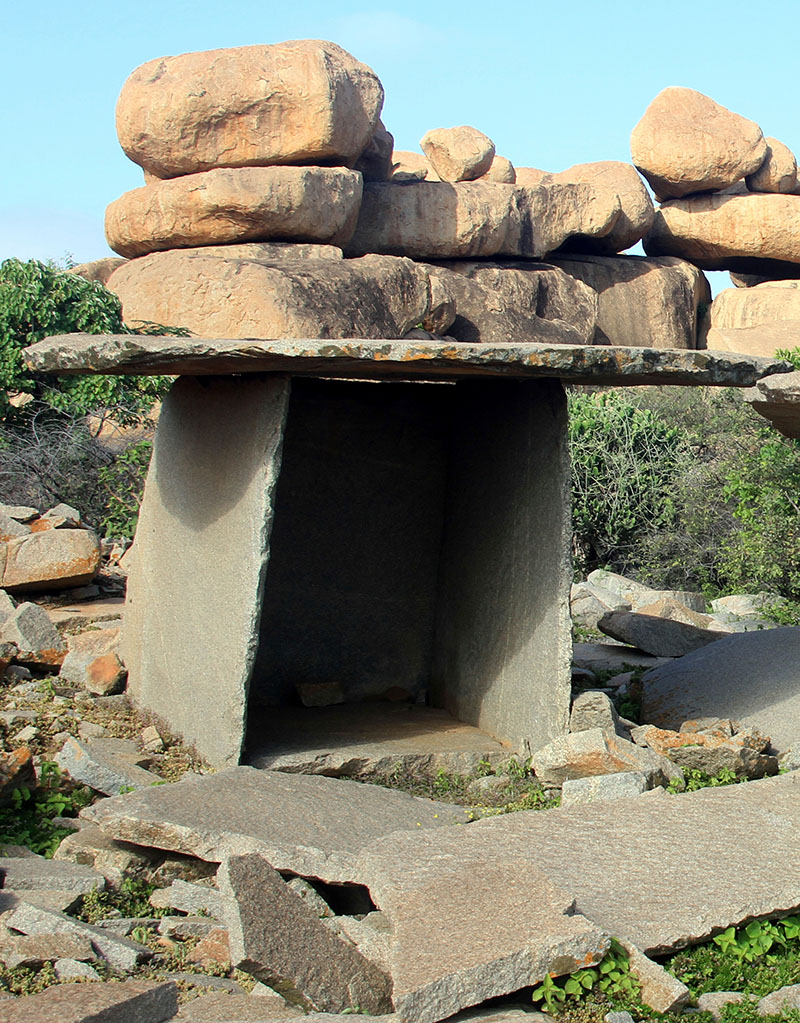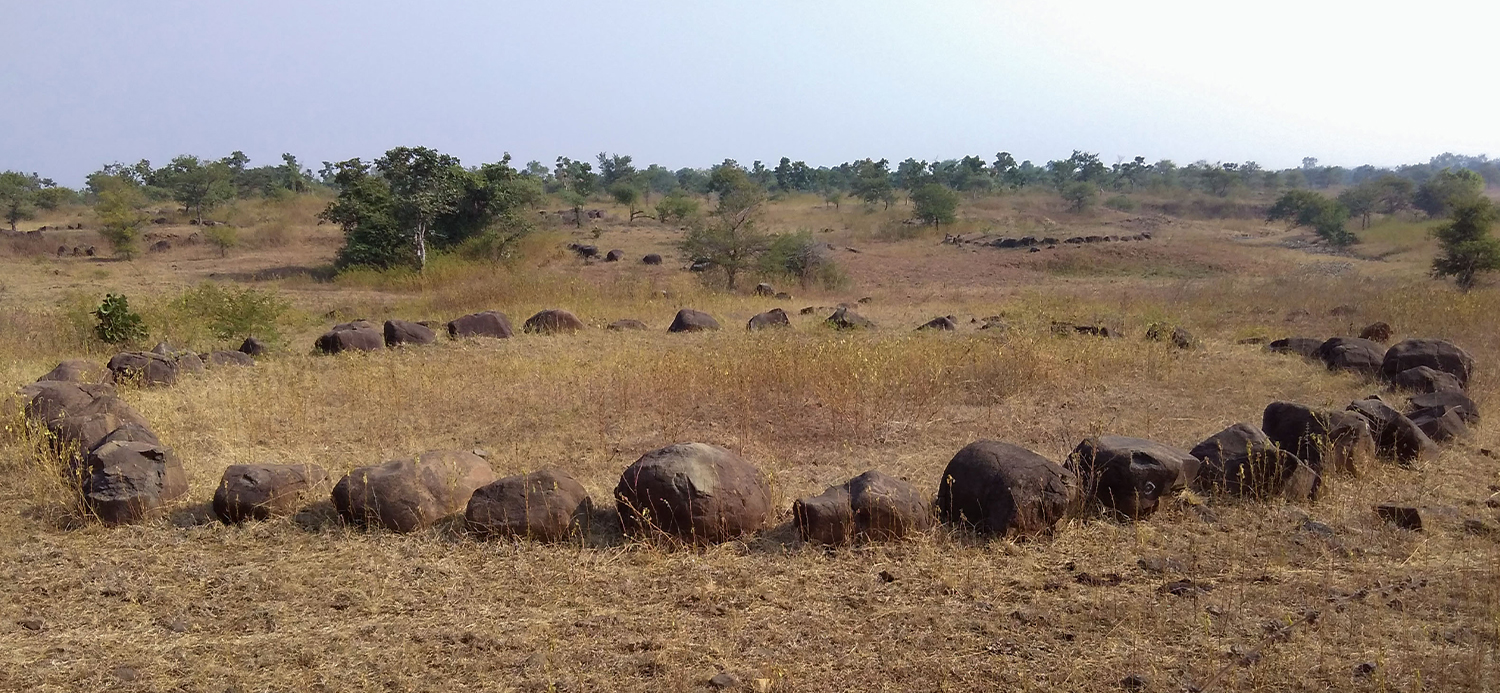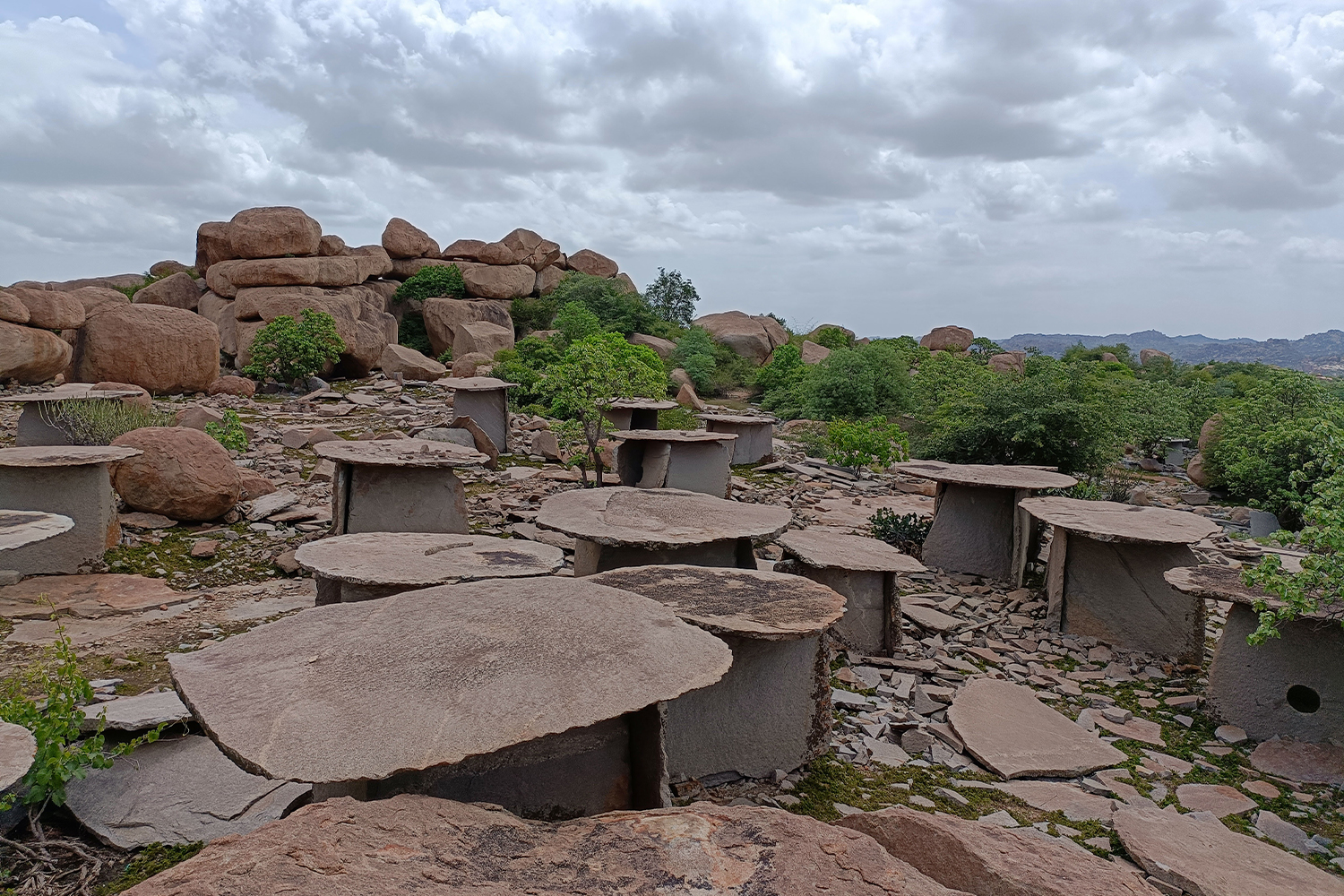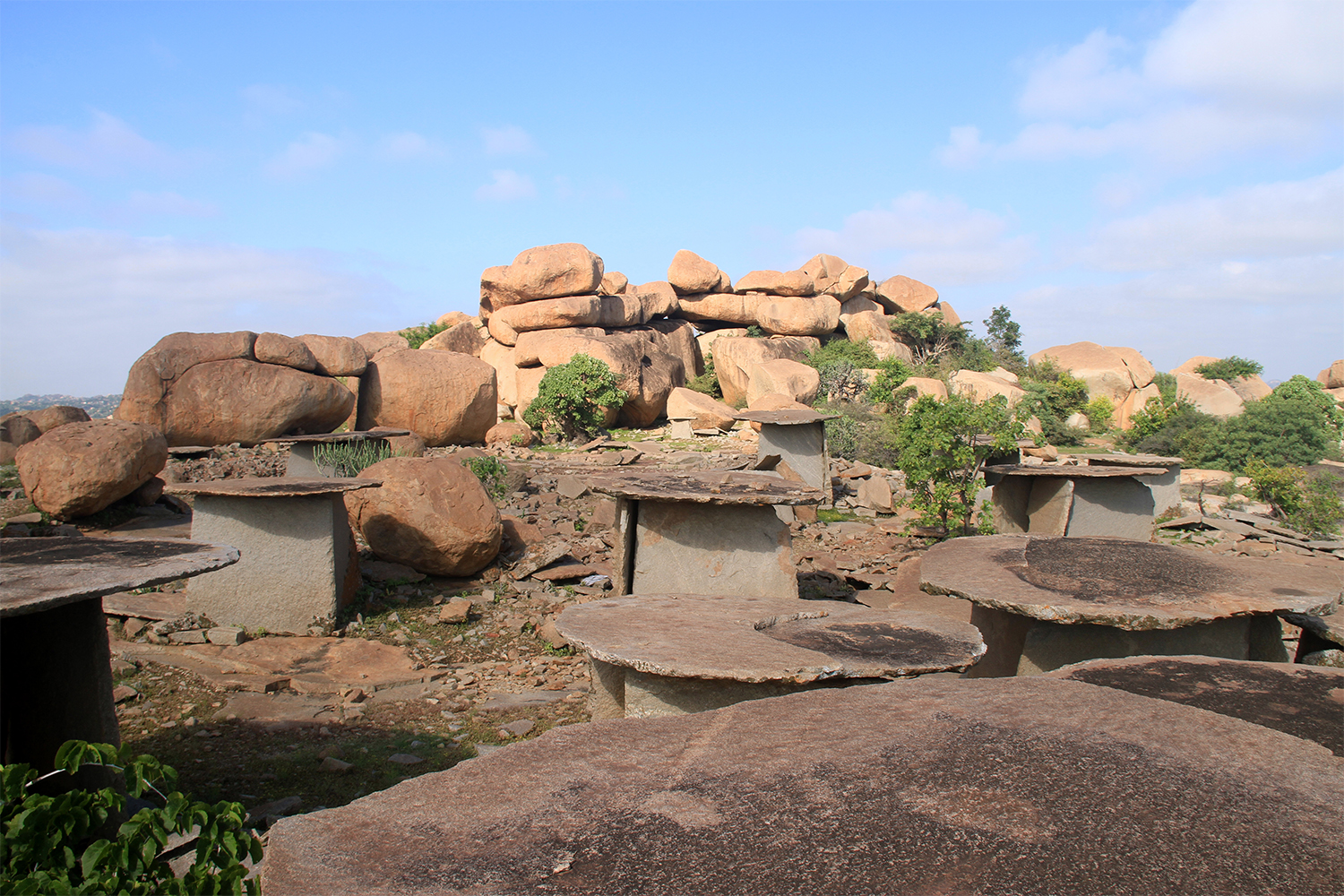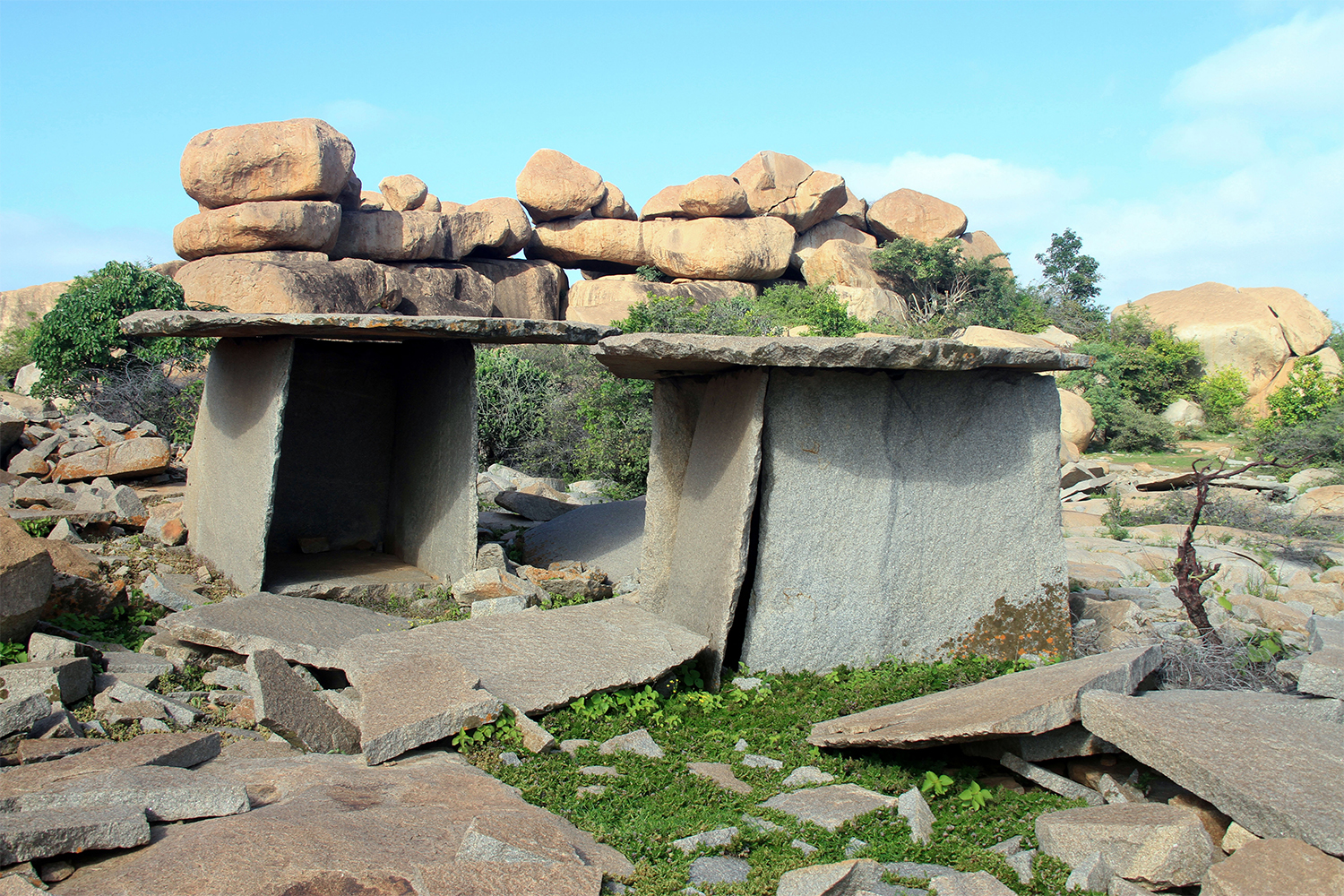ARTICLE
Deccan Megaliths
Megalith sites are generally accompanied by other material markers such as black and red ware ceramics. Agate beads, carved steatite earrings, human and animal figures, copper and bronze artefacts, terracotta figurines, tortoise shells, lapis lazuli beads, and the remains of horsegram and ragi grains are also sometimes found.
The megaliths of the Deccan were among the earliest archaeological remains to garner interest from colonial administrators, both amateurs and professionals. The earliest investigations were unsystematic and consisted of opening up many megalithic stone chambers, the contents of which were noted and itemised. The archaeologist Mortimer Wheeler initiated a more systematic investigation, arguing that the megaliths were the remains of a homogenous group of people. However, more recent studies have substantially dismissed this view.
Scholars now concur that the megaliths are best understood as material remnants signifying the social stratification and internal variations of agro-pastoral communities across the Deccan. They are either related to or are the results of commemorative–memorial practices, craft production, and consumption. The erection of megalithic structures was an exercise in communal commemoration as well as applying technical knowledge. Burial practices associated with them appear to have diffused across the regions of northern Karnataka, and western Andhra Pradesh.
There is variation both within and between megalithic sites, suggesting that regional ecology and socio-political organisation played a role in their production. Social meanings may be inferred through variations in the number of people buried, how the bodies were treated, and the number and kind of grave goods deposited with them. These reflect social hierarchy, with differences possibly being based on occupation, lineage, martial prowess, and cultic value.
While most megaliths are associated with mortuary contexts and are typically found in close proximity to settlements from the period, others are more secluded, and some bear traces of abandonment. Some sites in north-eastern Karnataka and western Telangana were not associated with burial practices: standing stones appear to have been erected to track astronomical events such as solstices and equinoxes, possibly in connection with seasonal crop cycles. These also reflect a heightened degree of social organisation, requiring large-scale communal rituals as well as managerial and specialist skills to procure and organise labour and resources. Remains of water pools, sedimented terraces, and herding camps have been found accompanying these sites, supporting their connection with agricultural resources.
As of writing, scholarly interest in Deccan megaliths is growing, though many sites are also under threat due to encroachment and urbanisation.
Bibliography
Our website is currently undergoing maintenance and re-design, due to which we have had to take down some of our bibliographies. While these will be re-published shortly, you can request references for specific articles by writing to hellomapacademy@map-india.org.




